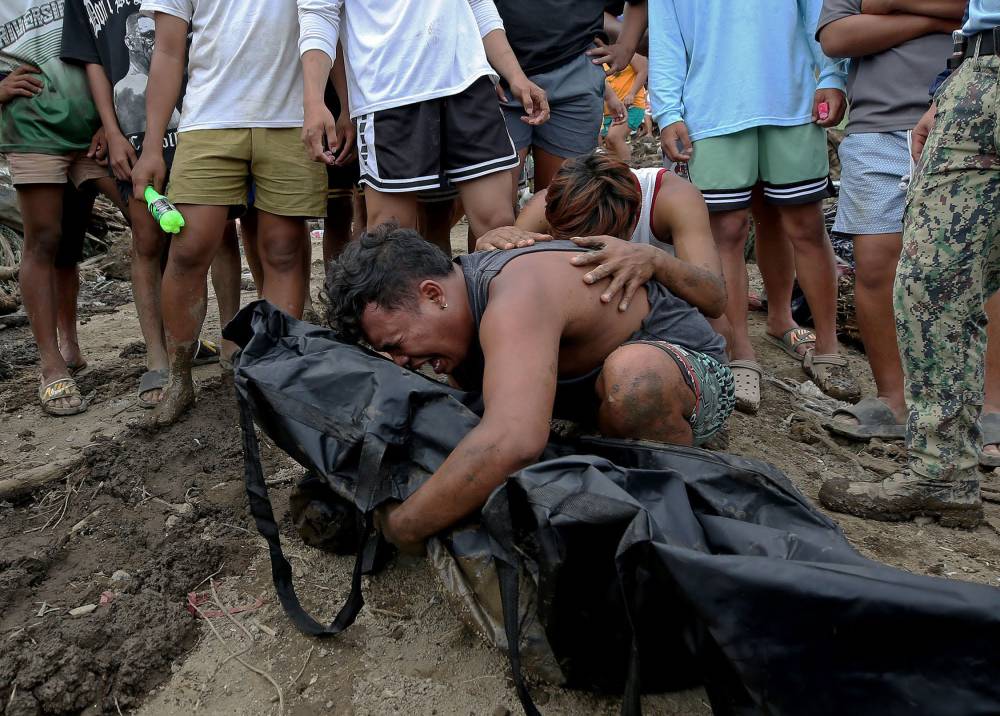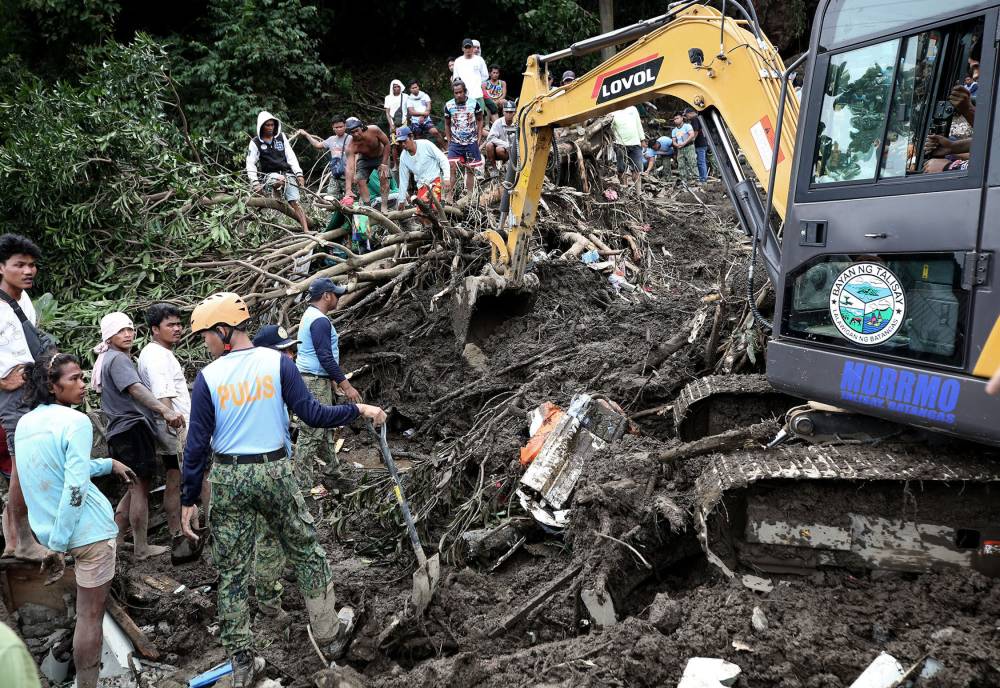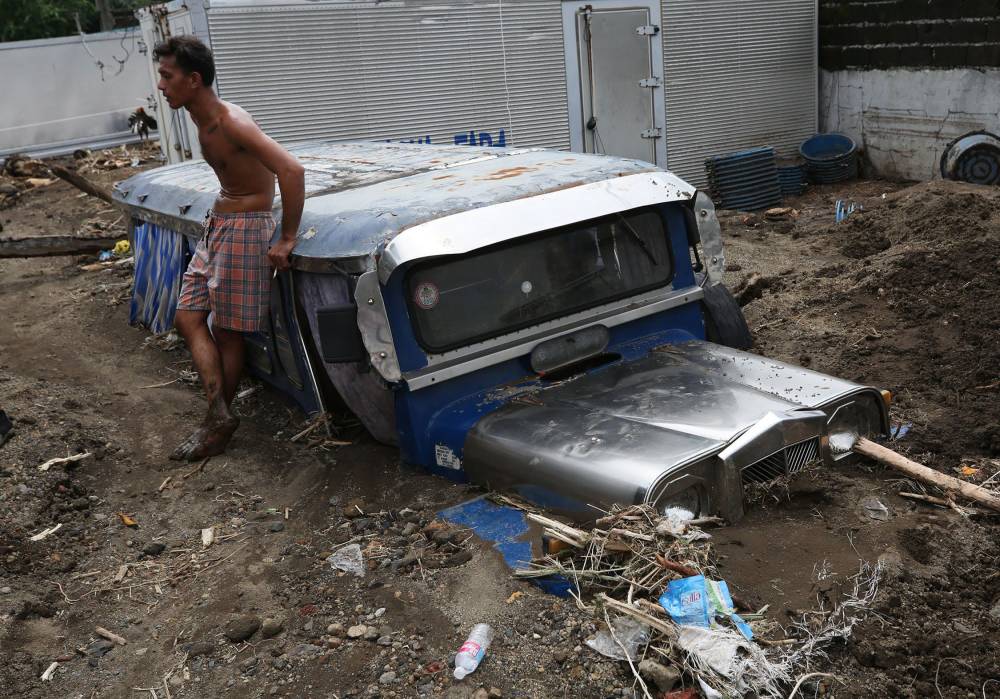‘Kristine’ death toll hits over 40 as damage widens

As the rains and strong winds from Severe Tropical Storm Kristine (international name: Trami) eased on Friday, disaster officials reported that more areas had been devastated and that the death toll had risen to 46, more than double than in the previous day.
Of the 15 regions from Mindanao to Luzon affected by Kristine, the 11th storm to hit the country this year, Bicol experienced the most widespread flooding and had the highest number of reported deaths, according to the Office of Civil Defense (OCD).
OCD said that of the 46 fatalities, 28 were from Bicol, 15 from Calabarzon and one each from Ilocos, Central Luzon and Zamboanga Peninsula. It said 20 people were missing.
Most of the people who died in the storm drowned in the floods which inundated entire towns, or were buried in landslides.
The National Risk Reduction and Management Council (NDRRMC), confirmed only 13 deaths — 11 in Bicol and one each in Central Luzon and Calabarzon.
As had been normal in previous disaster events, officials report different figures for casualties in the early days.
NDRRMC said that 2,656,446 individuals or 569,524 families in 15 regions were affected by Kristine. Bicol had the highest number of affected population with 1,860,625
It said 239,200 individuals or 64,447 families were staying in various evacuation centers across the country.

State of calamity
As of Friday afternoon, the provinces of Cavite, Albay, Camarines Norte and Camarines Sur, the towns of Donsol and Matnog in Sorsogon and Mulanay, Tagkawayan, and Lucban in Quezon were placed under a state of calamity.
Quezon City in Metro Manila, Calbayog City in Samar, and the towns of Biñan, San Pedro and Victoria in Laguna were also placed under a state of calamity.
In Eastern Samar, Borongan City, Arteche, Can-avid, Dolores, Jipapad, Maslog, Maydolong, Oras, San Policarpio, San Julian, Sulat, and Taft are now under a state of calamity.
Videos on social media shared by local residents showed floodwaters rising close to rooftops, submerging homes, sweeping away houses or turning streets into rampaging rivers.
Aid work stalled
Relief efforts have been hampered by flooded highways or roads that were damaged or blocked by fallen trees, mud and other debris, including those in Calabarzon (Cavite, Laguna, Batangas, Rizal and Quezon), which leads to Bicol.
Landslides in Caramoan town in the northern part of Catanduanes killed four people and another fell to his death from the roof of his house in the same province’s Bagamanoc town, OCD said.
In Batangas, landslides killed six in Talisay town, and five died in flash floods in Agoncillo. One died due to electrocution in Lipa City and another died of cardiac arrest during the storm in Laurel.

Falling trees killed one in Palanas, Masbate, and another in Calaca, Batangas, according to OCD. It said four others drowned – one in Aringay, La Union province, another in Masinloc, Zambales, the third in Zamboanga del Sur and the fourth slipped and fell into a river in Tagkawayan, Quezon.
Three men went missing separately while fishing during the storm – one in San Fernando City in La Union, another after his boat sank in Obando, Bulacan and third in Dimasalang, Masbate.
The OCD said 10 others were reported missing in the landslides that hit Calaca, Agoncillo and Talisay, all in Batangas.
Might ‘loop’ back
The state weather bureau said that the country might still feel Kristine’s wrath next week despite blowing out of the country toward Vietnam on Friday as it could “loop” back.
The storm’s interaction with the northeasterly and southwesterly winds, and with an approaching tropical cyclone, which would be called “Leon,” could pull it back to the West Philippine Sea (WPS), according to the Philippine Atmospheric, Geophysical and Astronomical Services Administration (Pagasa).
If Kristine and Leon maintain their strength to a level of tropical storm at a minimum and keep a maximum distance of 1,500 kilometers, they could pull each other in or even merge to become a single cyclone in a phenomenon called the “Fujiwhara Effect,” weather specialist Benison Estareja said.
“So, it is possible that the two will rotate or turn around, but it won’t last long. Leon will eventually move away from the landmass and Kristine will weaken by the first week of November,” he said.
This weather phenomenon, named after Japanese meteorologist Sakuhei Fujiwhara, occurs when two tropical cyclones “gravitate toward each other” to either reach a common center or merely orbit around each other before finding their own paths, according to meteorologists.
Kristine was centered 410 kilometers west of Sinait, Ilocos Sur, on Friday afternoon with maximum winds of 95 km per hour and gusts of up to 115 kph.
It might “loop counterclockwise on Sunday and Monday,” before moving further eastward into the WPS, according to forecaster Chenel Dominguez.
This scenario “heavily depends” on the behavior of Leon, which is still 2,380 km east of southeastern Luzon. Leon is expected to enter the Philippine area of responsibility on Sunday as either a tropical storm or severe tropical storm.
Senate review
Reacting to the widespread flooding in Bicol, Sen. Joel Villanueva said the Senate should scrutinize the P61.4-billion flood control projects in the region had been used when the proposed P6.352-trillion national budget for 2025 comes up for plenary discussions next month.
In 2023, Villanueva said more than P29.4 billion was allocated to the Department of Public Works and Highways (DPWH) to implement various anti-flooding programs in the Bicol provinces. The DPWH received nearly P32 billion more for infrastructure projects to mitigate flooding in the region this year, he said.
“We should closely look at how these funds were actually used and see if the government’s flood control projects and programs have impact,” Villanueva said in a Zoom press briefing.
In the wake of Super Typhoon Carina (international name: Gaemi) in July, Villanueva said that the DPWH, the Metropolitan Manila Development Authority, the Department of Environment and Natural Resources (DENR), and the Commission on Climate Change had a combined budget of P1.44 billion a day for flood control.
Senate President Francis Escudero, a former governor of Sorsogon, backed Villanueva’s recommendation to look into the flood control spending.
He said the review should also include allocations to state agencies such as the DENR and the Department of the Interior and Local Government.
“Moving forward, however, we will not only exact accountability, but also make sure that the 2025 budget will provide preventive measures to avoid a recurrence, as well as adequate rehabilitation and response, in case of a similar calamity in the future,” Escudero said in a Viber message. —WITH REPORTS FROM KATHLEEN DE VILLA AND MARLON RAMOS





















